Posted: October 11th, 2014 | No Comments »
Browsing the book tent at the Wigtown Book Festival last week I came across this book I hadn’t heard of before – Tim Newark’s Empire of Crime: Organised Crime in the British Empire. Of course plenty of references to China, Hong Kong and especially Shanghai (Bill Fairbirn and the SMP, Big Eared Du, opium etc etc). Though readers of China Rhyming will be aware of most of these things the book does usefully show how Shanghai and China fitted into an “empire” of crime linking Cairo with India to China and so on as well as linking the British ending of the opium trade to the rise of the illicit narcotics business across the empire and wherever its tentacles reached.

Sometimes the best intentions can have the worst results. In 1908, British reformers banned the export of Indian opium to China. As a result, the world price of opium soared to a new high and a century of lucrative drug smuggling began. Criminal producers in other countries exploited the prohibition and gang wars broke out across South-East Asia. It was the greatest gift the British Empire gave to organised crime.
Empire of Crime introduces the reader to a whole new collection of heroes and villains, including pioneering narcotics investigator Russell Pasha, commandant of the Cairo police force; master criminal Du Yue-Sheng, drug lord of the Shanghai underworld; and tough North-West Frontier police chief Lieutenant-Colonel Roos-Keppel, nemesis of Afghan criminal gangs. Tim Newark weaves hidden reports, secret government files and personal letters together with first-hand accounts to tell the epic story of a global fight against organised crime.
Tim Newark is the author of the critically acclaimed Lucky Luciano: Mafia Murderer and Secret Agent and The Mafia at War. For 17 years editor of Military Illustrated, he is also the author of numerous military history volumes, including Highlander. He has worked as a TV scriptwriter and historical consultant, resulting in seven TV documentary series for BBC Worldwide and the History Channel, including the thirteen-part TV series Hitler’s Bodyguard. He contributes book reviews to the Financial Times.
Posted: October 10th, 2014 | No Comments »
I recently posted a series of old postcards of San Francisco Chinatown. Although I’ve visited several times I can’t really claim to know the area well or what has gone on there in terms of architecture and redevelopment. Thanks then to a reader who pointed out that the old Chinese Hospital in Chinatown was knocked down last year. Apparently this was after strong objections from the National Trust for Historic Preservation. A new hospital is being built on the site but still it does seem a shame they couldn’t have found a new location and re-purposed the old building. The original building dates back to 1925 as the only purpose built Chinese hospital in the USA. It was originally built to replace the Tung Wah Dispensary. Incidentally, so Wikipedia tells me, Bruce Lee was born there. Anyway, some pictures….


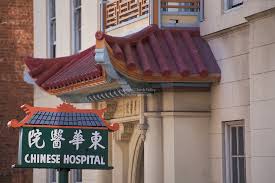
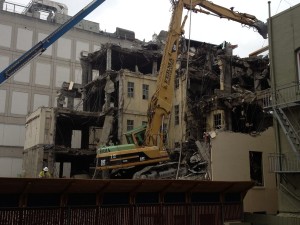
Posted: October 9th, 2014 | No Comments »
Zed Asian Arguments is a series of shorter, but serious, books I commission and edit on topical Asian issues…we do two a year, and this October I’m delighted to be publishing Andrew MacGregor Marshall’s A Kingdom in Crisis (for American Amazon click here). I believe this is an exceptionally important book on a subject that, while the Thai government would like it not to be published or spoken about, is intrinsic to understanding the still unfolding events in Bangkok politics….
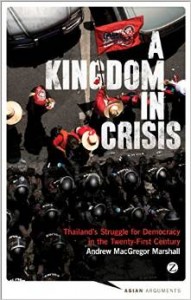
Struggling to emerge from a despotic past, and convulsed by an intractable conflict that will determine its future, Thailand stands at a defining moment in its history. Scores have been killed on the streets of Bangkok. Freedom of speech is routinely denied. Democracy appears increasingly distant. Long dreaded by Thais, the death of King Bhumibol Adulyadej is expected to unleash even greater instability.
Yet in spite of the impact of the crisis, and the extraordinary importance of the royal succession, they have never been comprehensively analyzed, because Thailand’s draconian lèse majesté law has silenced most discussion – until now. Breaking Thailand’s draconian lèse majesté Andrew MacGregor Marshall is one of the only journalists covering contemporary Thailand who tells the whole story. He provides a comprehensive explanation that makes sense of the crisis for the first time, revealing the unacknowledged succession conflict that has become entangled with the struggle for democracy in Thailand.
Posted: October 8th, 2014 | No Comments »
A little discussed, but fascinating, aspect of treaty port China in Ruth Rogaski’s Hygenic Modernity….
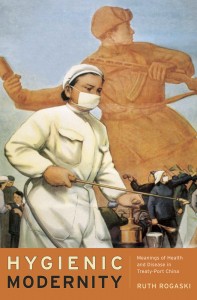
Placing meanings of health and disease at the center of modern Chinese consciousness, Ruth Rogaski reveals how hygiene became a crucial element in the formulation of Chinese modernity in the nineteenth and twentieth centuries. Rogaski focuses on multiple manifestations across time of a single Chinese concept, weisheng—which has been rendered into English as “hygiene,” “sanitary,” “health,” or “public health”—as it emerged in the complex treaty-port environment of Tianjin. Before the late nineteenth century, weisheng was associated with diverse regimens of diet, meditation, and self-medication. Hygienic Modernity reveals how meanings of weisheng, with the arrival of violent imperialism, shifted from Chinese cosmology to encompass such ideas as national sovereignty, laboratory knowledge, the cleanliness of bodies, and the fitness of races: categories in which the Chinese were often deemed lacking by foreign observers and Chinese elites alike. Ruth Rogaski is Associate Professor of History at Vanderbilt University.
Posted: October 7th, 2014 | No Comments »
I’ve always been rather interested in Adele Astaire, sister to Fred. In the early, pre-Ginger Rogers, days Fred and Adele were an exhibition dance team and wowed them in both New York and London. In those days in the flapper ’20s Adele was the bigger star of the two. But, in 1932, she married an English lord and basically retired. She was amazingly beautiful and a great dancer – and she once posed with a Chinese parasol, and it’s been a while since we had a parasol on China Rhyming (but did go through a bit of a flurry at one point here, with Zelda Fitzgerald’s parasol and others).
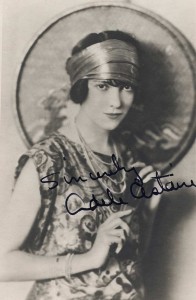
Posted: October 6th, 2014 | No Comments »
With the Yellow Peril getting namechecked on Downton last week it seems an especially fitting launch date for Christopher Frayling’s The Yellow Peril….
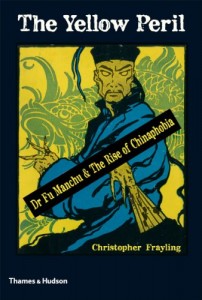
A hundred years ago, a character made his first appearance in the world of literature who was to enter the bloodstream of 20th-century popular culture: the evil genius called Dr Fu Manchu, described at the beginning of the first story in which he appeared as the yellow peril incarnate in one man. Why did the idea that the Chinese were a threat to Western civilization develop at precisely the time when that country was in chaos, divided against itself, victim of successive famines and utterly incapable of being a peril to anyone even if it had wanted to be? Here, Sir Christopher Frayling assembles an astonishing diversity of evidence to show how deeply ingrained Chinaphobia became in the West so acutely relevant again in the new era of Chinese superpower. Along the way he talks to Edward Said, to the last Governor of Hong Kong, to Sax Rohmers widow, to movie stars and a host of others; he journeys through the opium dens of the 19th century with Charles Dickens; takes us to the heart of popular culture in the music hall, pulp literature and the mass-market press; and shows how film amplifies our assumptions, demonstrating throughout how we neglect the history of popular culture at our own peril if we want to understand our deepest desires and fears.
Posted: October 5th, 2014 | No Comments »
Keelung is a Taiwanese city I’ve always had a major soft spot for – a short train ride from Taipei but it’s a city, like most port towns, that has a lot of atmosphere and had been at the centre of many of Taiwan’s major historical moments. Since earlier this year protestors and activists have been campaigning to save the historic wharf buildings (I blogged about it back in February here – here they are below). I’m not sure about the current state of the buildings but there are now images of the new proposed Harbour Service Building – below. The question preservation campaigners have been asking is why the new development could not have incorporated the older buildings? Must it be an all or nothing battle between old and new or can the former inform the latter and retain history? Quite what will happen I do not know but Keelung is not often a site of regional and global preservationist interest, but it does deserve to be….
Some more great Keelung architecture here (taken in 2010)
A post of Keelung’s Ershawan Fort here
Keelung’s monument to Prince Kitashirakawa here
A post on Keelung’s French Cemetery here
the marvellous Keelung Harbour Integrated Administration Building here


Posted: October 4th, 2014 | No Comments »
Positive news from Taipei where the historic Wenmeng Building is to be preserved and excluded from an urban renewal project, according to Taipei City Government’s Urban Regeneration Office. A private property developer had wanted to raise it, and put up a 20-story building, but that has been stopped for now. The 92sqm structure in Datong dates back to 1925 and was the well site of a former brothel and is home now to the Collective of Sex Workers and Supporters, an NGO working with, well, sex workers. It also houses a private sex industry museum and accommodation for ex-licensed prostitutes. A spokeswoman for the Collective spokeswoman commented, “Although the sex industry was outlawed by Taipei City Government in 1997, it is still wrong to bury the past under development projects,†– and so it is. Hundreds of protestors – sex worker activists and preservationists in a rather unusual alliance had campaigned to defend the building. The former brothel also has some nice examples of period brick houses on either side of it and the area was once a noted red light district.












